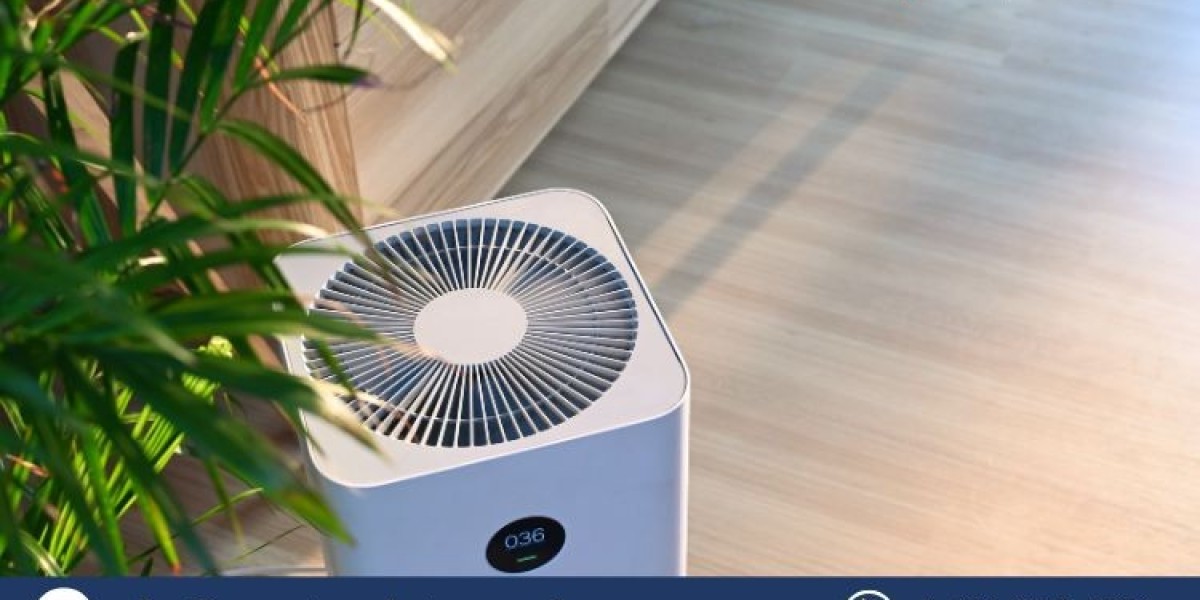The global air purifier market size is expanding rapidly as consumers and industries recognize the importance of clean air and its impact on health. With rising air pollution levels, increasing respiratory diseases, and growing awareness about indoor air quality, demand for air purifiers is on the rise.
In 2024, the global air purifier market attained a value of USD 16.40 billion. The market is projected to grow at a CAGR of 10.00% from 2025 to 2034, reaching approximately USD 42.54 billion by 2034. This growth is driven by technological advancements, strict environmental regulations, and increasing adoption in residential and commercial spaces.
This blog explores the market dynamics, key drivers, challenges, trends, and future opportunities shaping the air purifier industry worldwide.
Market Overview
Air purifiers are devices that remove pollutants, allergens, and toxins from the air, improving indoor air quality. They are widely used in homes, offices, hospitals, schools, and industrial facilities to combat airborne contaminants such as dust, smoke, pollen, bacteria, and viruses.
Common types of air purifiers include:
- HEPA (High-Efficiency Particulate Air) Filters – Effective in capturing airborne particles.
- Activated Carbon Filters – Remove odors, gases, and VOCs (volatile organic compounds).
- UV Air Purifiers – Use ultraviolet light to kill bacteria and viruses.
- Ionic Air Purifiers – Release negative ions to trap airborne pollutants.
- Smart Air Purifiers – Integrated with IoT and AI for real-time air quality monitoring.
With increasing urbanization and industrialization, air purifiers are becoming a necessity rather than a luxury.
Key Market Drivers
Several factors are fueling the growth of the global air purifier market:
1. Rising Air Pollution Levels and Health Concerns
Rapid industrialization, urbanization, and vehicle emissions contribute to poor air quality worldwide. Increasing cases of asthma, allergies, and respiratory diseases are driving demand for air purifiers in homes, offices, and healthcare facilities.
2. Growing Consumer Awareness About Indoor Air Quality
People are becoming more conscious of the negative health effects of indoor air pollutants such as pet dander, mold spores, and household chemicals. This awareness is fueling the adoption of air purifiers for personal and family health.
3. Adoption of Air Purifiers in Smart Homes and Offices
The rise of smart homes and connected devices is boosting demand for AI-powered, Wi-Fi-enabled, and app-controlled air purifiers that provide real-time air quality monitoring and automation.
4. Increasing Government Regulations and Environmental Policies
Governments worldwide are enforcing strict air quality standards and offering subsidies for eco-friendly appliances. Regulations such as the Clean Air Act and WHO air quality guidelines are pushing both consumers and businesses to invest in air purification systems.
5. Growth in Healthcare and Industrial Sectors
Hospitals, laboratories, and industrial facilities require air purification systems to maintain hygienic environments, prevent airborne infections, and reduce chemical exposure. The healthcare sector is a major driver of air purifier demand.
6. Rising Demand for Portable and Wearable Air Purifiers
With increasing outdoor pollution, consumers are purchasing portable and wearable air purifiers for cars, workspaces, and travel use. This trend is expanding the market beyond traditional home-based air purifiers.
Market Challenges
Despite strong growth, the air purifier industry faces several challenges:
1. High Initial Cost and Maintenance Expenses
Advanced air purifiers, especially those with HEPA filters and smart sensors, can be expensive. Regular filter replacement and maintenance costs add to consumer concerns, especially in price-sensitive markets.
2. Limited Awareness in Developing Countries
While air purifiers are gaining popularity in developed nations, awareness remains low in emerging economies, where consumers prioritize basic necessities over air purification solutions.
3. Energy Consumption and Sustainability Issues
Many air purifiers consume significant electricity and generate filter waste, leading to environmental concerns. Companies must innovate to create energy-efficient and eco-friendly models.
4. Performance Variability in Different Environments
The effectiveness of air purifiers varies based on room size, humidity levels, and pollutant types. Consumers often struggle to choose the right model, leading to misaligned expectations and dissatisfaction.
5. Presence of Alternative Air Cleaning Methods
Consumers also use natural ventilation, houseplants, and HVAC air filters to improve air quality, creating competition for standalone air purifiers.
Key Market Trends
Several emerging trends are shaping the global air purifier industry:
1. Adoption of Smart and AI-Enabled Air Purifiers
Modern air purifiers come with Wi-Fi connectivity, real-time air quality monitoring, and voice control features. AI-based sensors automatically adjust filtration levels based on pollution levels.
2. Rise of Eco-Friendly and Energy-Efficient Models
Manufacturers are developing low-energy consumption purifiers with reusable and biodegradable filters to meet growing demand for sustainable appliances.
3. Increasing Popularity of Multi-Functional Air Purifiers
Air purifiers with added functions such as humidifiers, dehumidifiers, and air ionizers are becoming popular, offering enhanced air quality solutions in a single device.
4. Growth in Demand for Commercial and Industrial Air Purification
Industries such as manufacturing, pharmaceuticals, and construction are investing in high-capacity air purifiers to meet air quality regulations and protect workers from airborne pollutants.
5. Expansion of Online Sales and Direct-to-Consumer (DTC) Brands
Consumers prefer buying air purifiers online through Amazon, Alibaba, and brand websites, benefiting from discounts, product comparisons, and customer reviews.
6. Rising Demand for HEPA and UV-Based Air Purifiers
HEPA filters remain the gold standard in air purification, while UV light technology is gaining traction for its ability to eliminate airborne viruses and bacteria.
Market Segmentation
The global air purifier market is segmented based on technology, end-user, distribution channel, and region.
1. By Technology
- HEPA Filters – Most effective for capturing small particles.
- Activated Carbon Filters – Removes odors and gases.
- UV-C Light Purifiers – Kills bacteria and viruses.
- Ionic and Electrostatic Purifiers – Removes airborne contaminants using charged ions.
2. By End-User
- Residential – Homes, apartments, and small spaces.
- Commercial – Offices, shopping malls, restaurants.
- Industrial – Factories, warehouses, chemical plants.
- Healthcare – Hospitals, laboratories, pharmaceutical facilities.
3. By Distribution Channel
- Online Retail – Amazon, eBay, company websites.
- Offline Stores – Electronics stores, specialty retailers.
- Direct Sales – Commercial and industrial purchases.
4. By Region
- North America – Strong demand for smart and high-performance purifiers.
- Europe – Rising government regulations on air pollution.
- Asia-Pacific – Fastest-growing market due to urbanization and industrial pollution.







